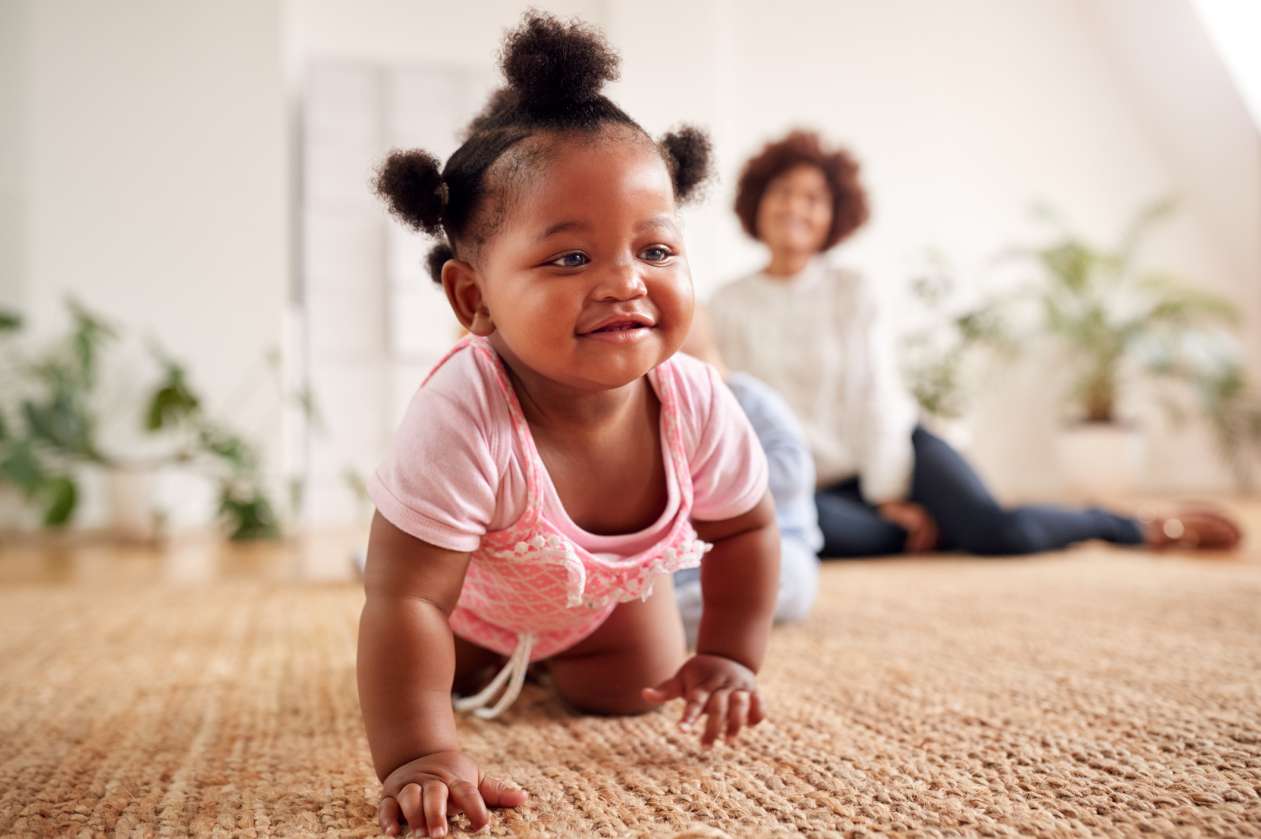
Physical literacy checklist: 0-2 years
These are some basic movement and motor skills that your infant should be developing. These lay the groundwork for developing physical literacy at older ages. You can also explore different activities with your infant to develop these skills.
1. Grasping
Your child is born with a grasping reflex from day one. However, she will actually begin to practice grasping with deliberate intention at around three to four months. The ability to grasp objects is an essential motor skill. It also requires the development of hand-eye coordination, and it needs to be stimulated and supported in infancy.
Tip: Make sure your child always has age-appropriate toys to encourage her to practice grasping.
2. Roll over
Your infant should be able to roll over onto her stomach between four and six months of age. Rolling over requires the development of basic core strength, and continued practice develops greater strength and coordination to progress to sitting and crawling.
Tip: Give your infant regular tummy time so she becomes familiar with the sensation of being on her stomach.
3. Sitting
Infants will generally be able to sit up unassisted at six months. Sitting requires core strength and coordination, which is developed earlier through regular tummy time.
Tip: When your infant starts to sit up on the floor, make sure that there are no sharp or hard obstacles present. Never leave her sitting unattended on beds, sofas, or chairs. If she loses her balance and tumbles, serious injury can result.
4. Crawling
For the most part, infants begin to crawl between seven and 10 months. It sometimes begins as an “army crawl” with her pulling her body forward using her hands. Crawling requires your baby to have the strength to push herself up onto her hands and knees, and then maintain balance in that position as she propels herself forwards or backwards.
Tip: Encourage your child to crawl and reach by placing toys on the floor around her. While some infants don’t ever crawl, but instead go directly to cruising, don’t be in a rush for her to walk. Crawling is important for both motor and cognitive development.
5. Cruising
Cruising describes how infants begin to learn how to walk by holding onto furniture for support. Your child develops strength, balance, and coordination by cruising.
Tip: You should ensure that your child is safe to cruise by removing floor obstacles such as toys and cushions, and removing any furniture that has sharp edges or hard angles.
6. Walking
At around 13 months, most children will be walking without support. That is, they will be “toddling” as they take their first steps without assistance (that’s where the term “toddler” comes from). 13 months is an average: some children may walk sooner, and some as late as 16 months.
Tip: As with cruising, you should ensure that your child is safe for walking by removing obstacles on the floor – toys and cushions – and removing any furniture with sharp edges or hard angles.





